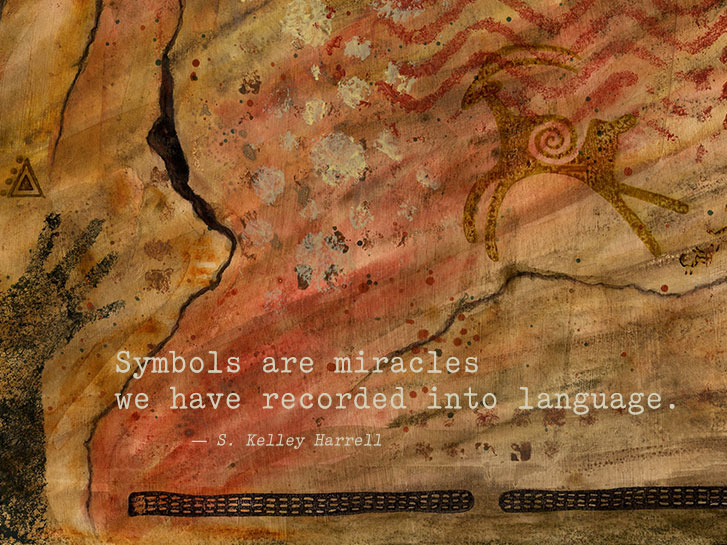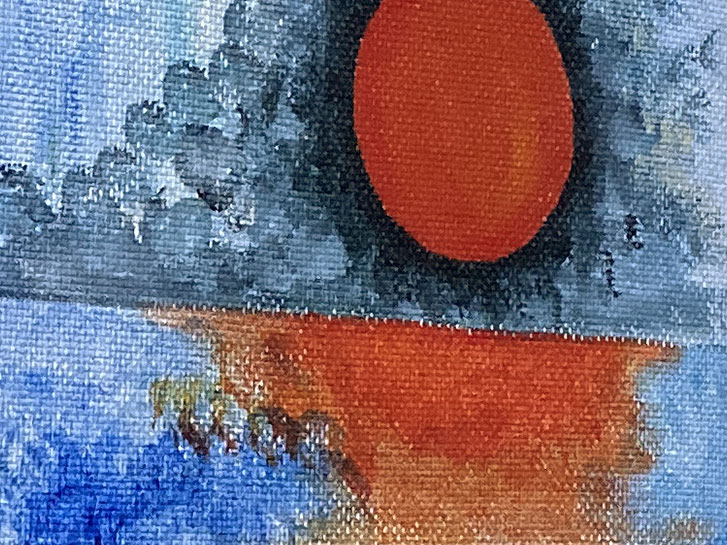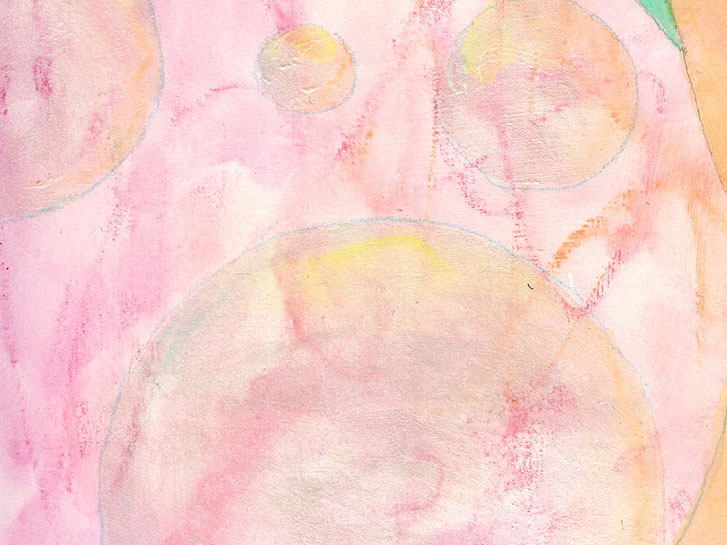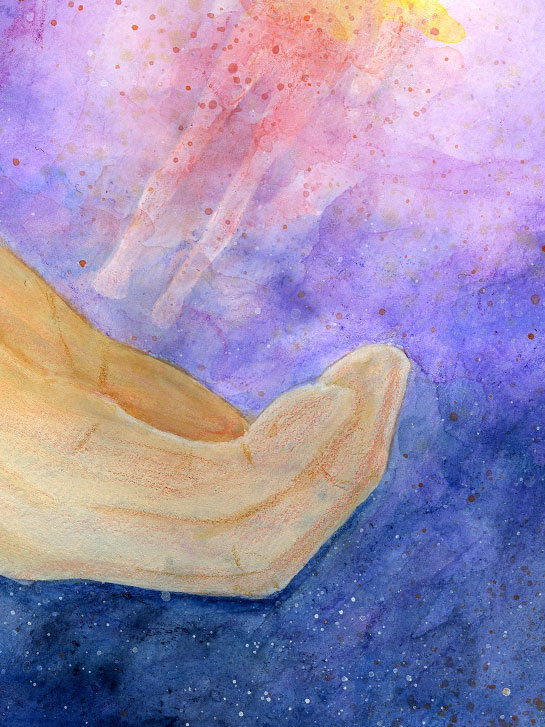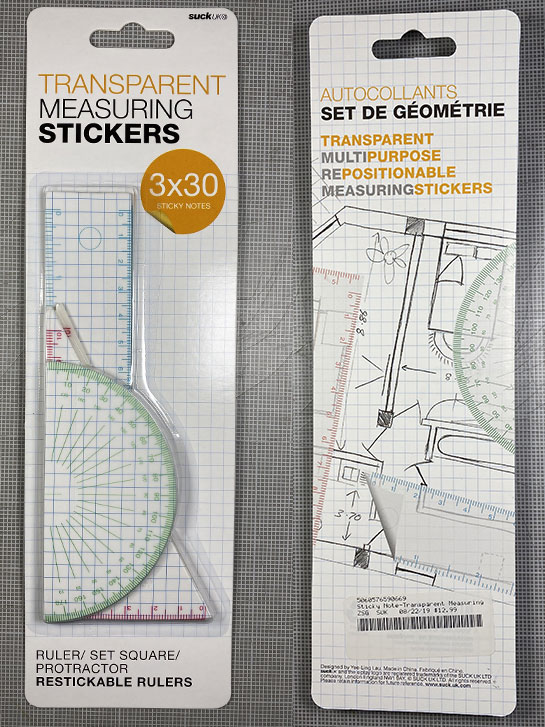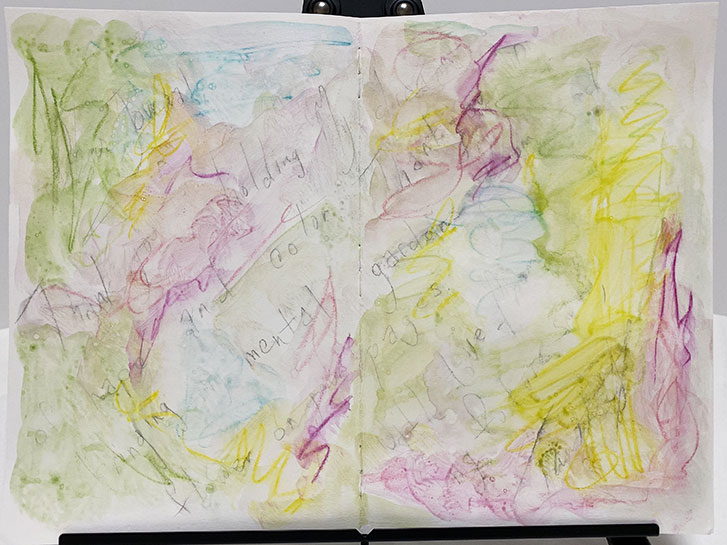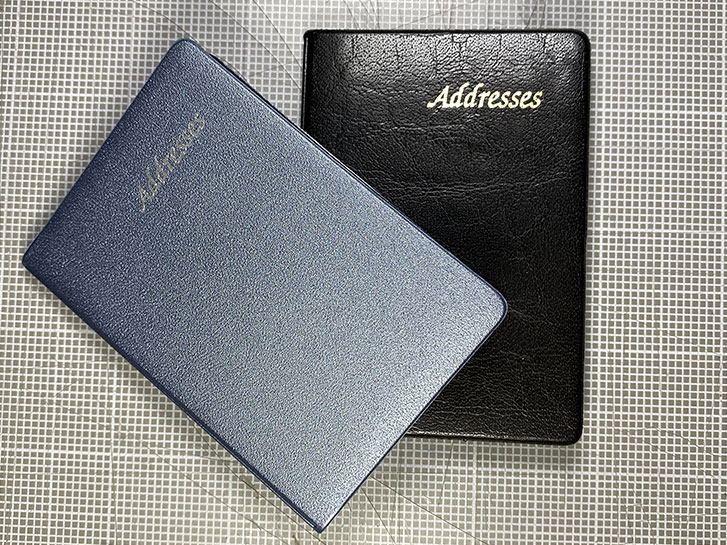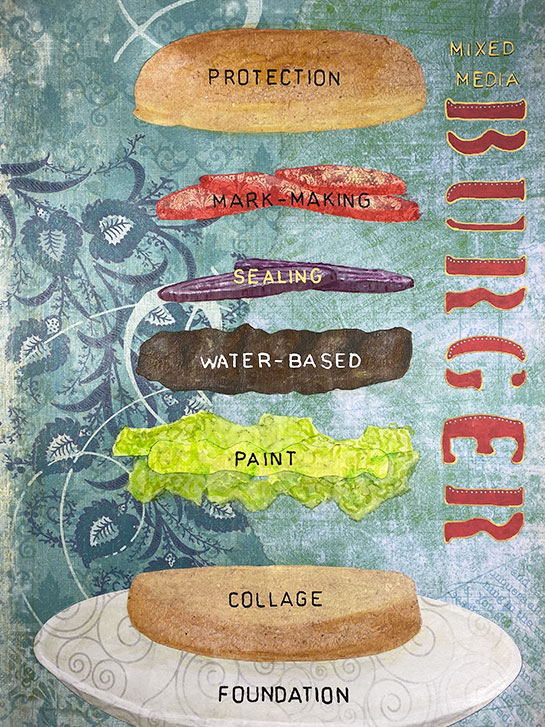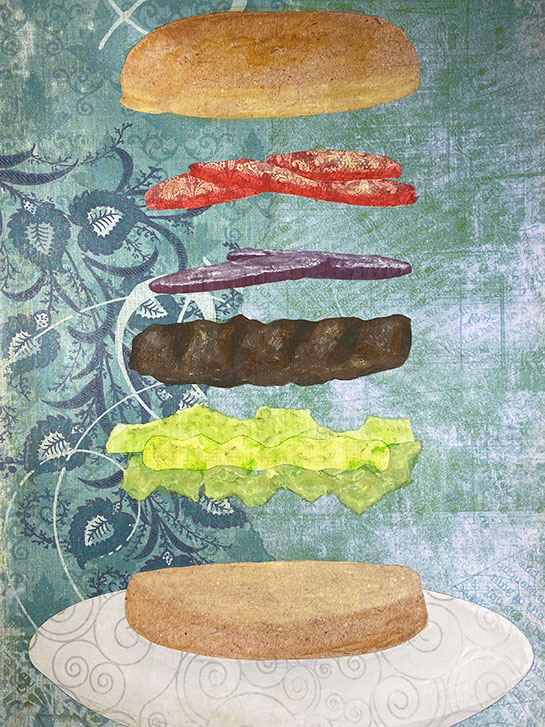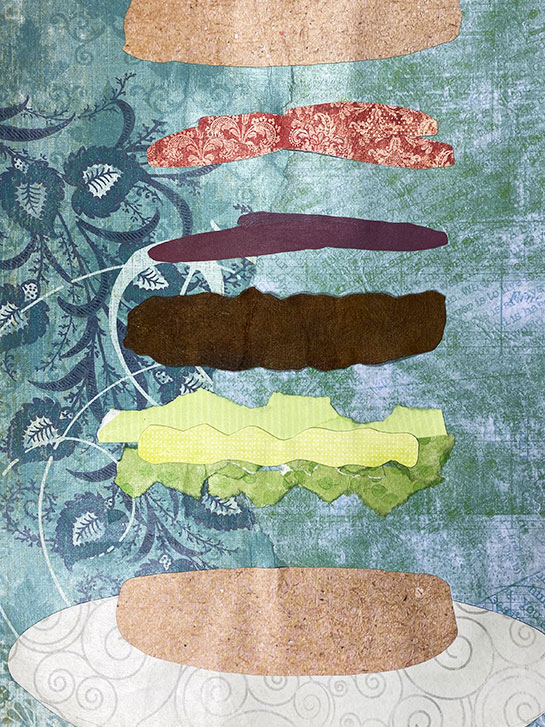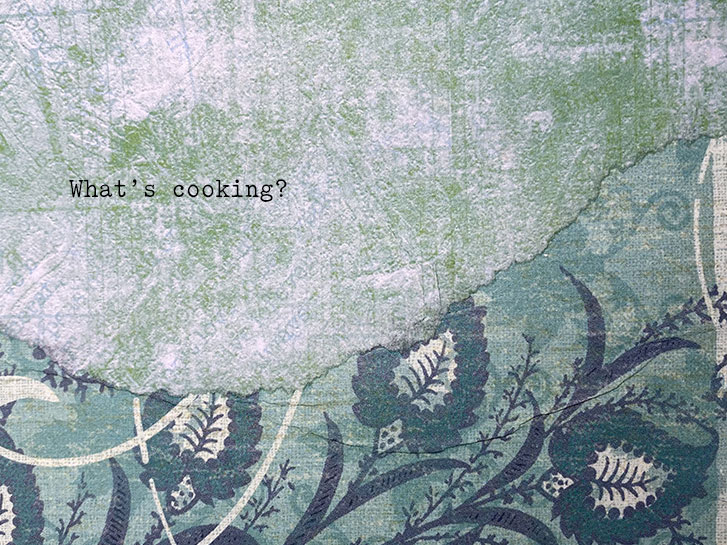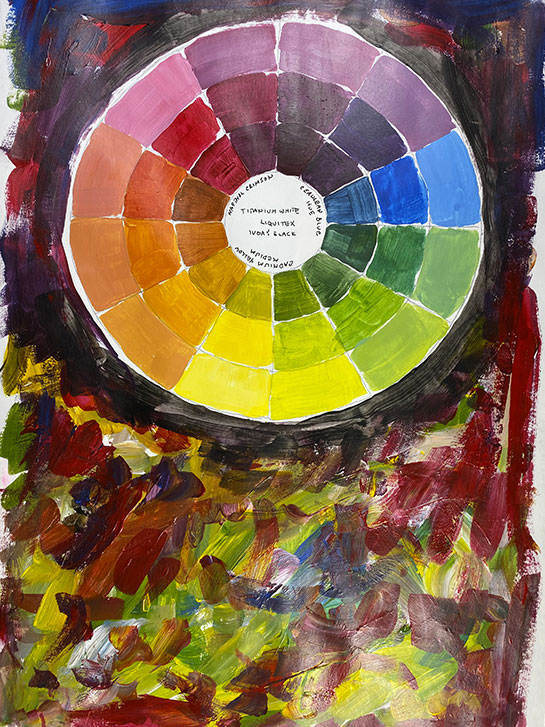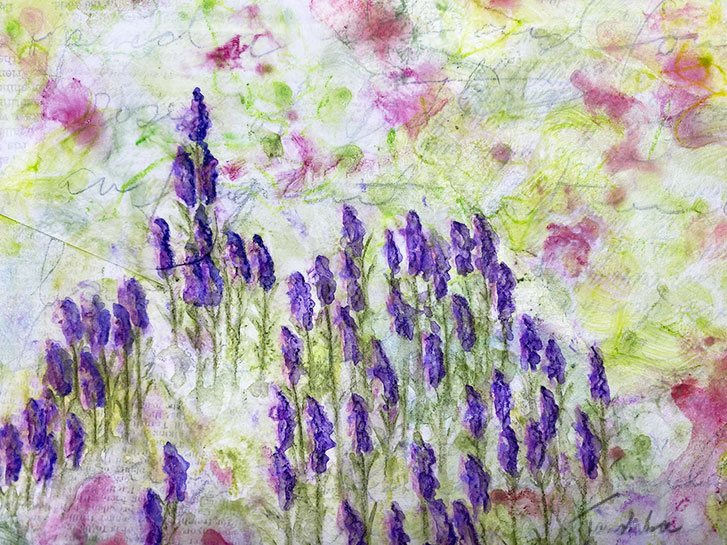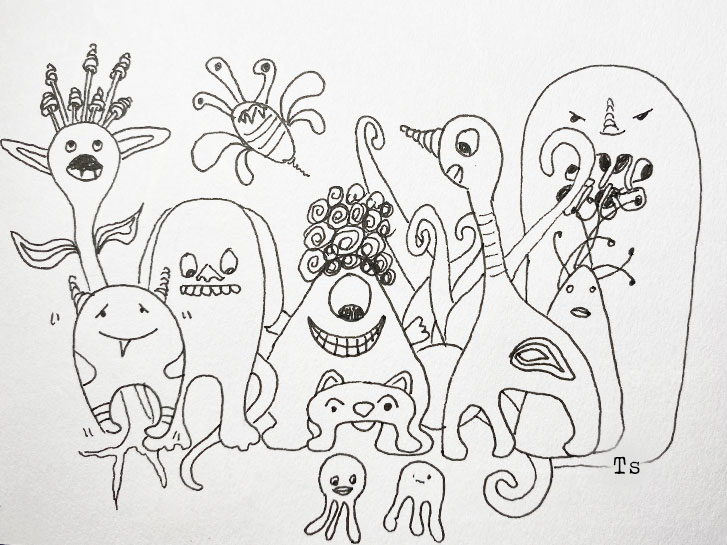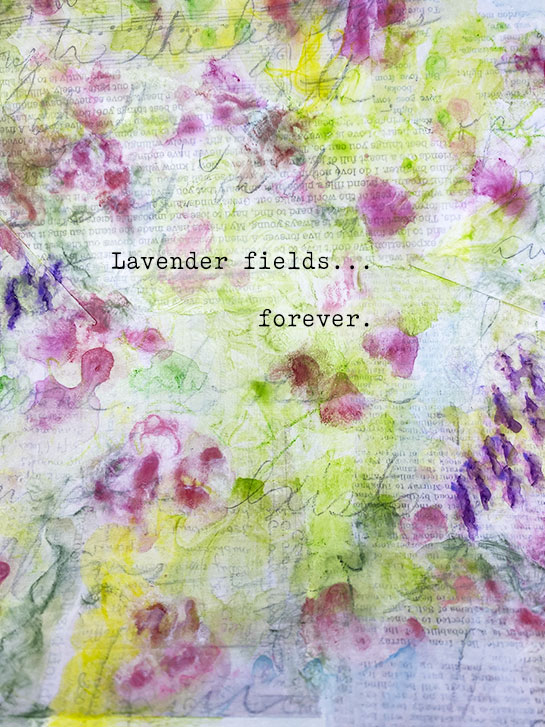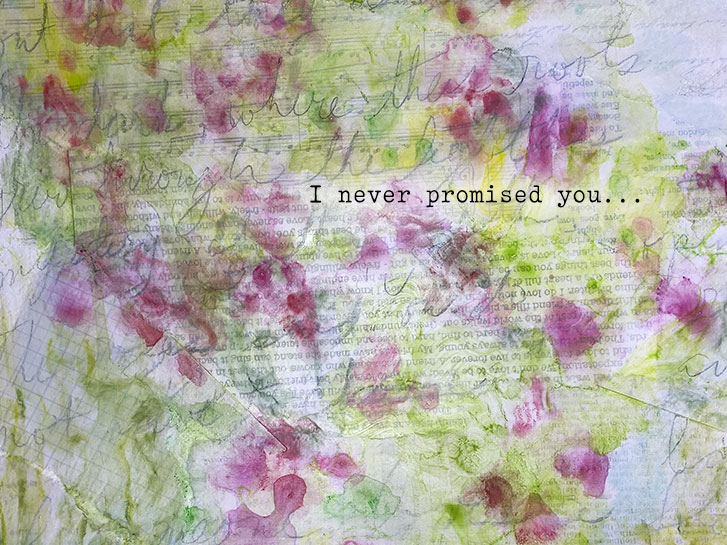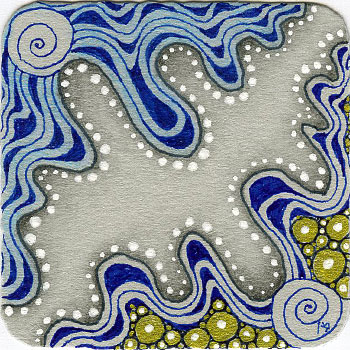Before Christmas, I showed you a little peek of a very old acrylic painting that I started when I was young.
I recently found another unfinished work that I began in the 1980’s. I will probably either finish or redo this one also.
I don’t know if I will keep the original theme on this one, but the small part I’m showing you in this image, I still like.
We’ll see what this becomes!
Have you ever been trying to draw something like a mandala, using a plastic protractor, and your tool slides as your drawing? It’s happend to me a lot over the years. It can be frustrating, and makes it difficult to construct something precise!
Well, recently I was shopping in Plunkett’s Stationery in Tucson, Arizona, and I came across these stickers! Since then, I’ve also discovered that you can get them on Amazon .
A while back, I showed you the art journal that I made from a pad of paper. I completed it at the end of November and you can read more about it here .
I made it specifically for Laly Mille’s The Artist and The Journal class.
On the first day of 2020, I made the first marks in this new book! I began by writing a journal entry.
And then I added scribbles of colors using Caran d’Ache Neocolor II and Inktense pencils.
When I was shopping in Tucson over the holidays, I found these tiny address books in Plunket’s Office Supplies. They are actually a vinyl cover over a small, inserted booklet. The price was about $3.50 each.
These are a bit bigger than our A8 micro art journals, but they work very well as a protective cover.
So, I cut papers and covers to make several micro art journals. I used multi-media paper cut to size and stiffer craft paper for the covers.
So, what are we building? A mixed-media burger! Yum!
The point of this exercise was to figure out for myself, what my mixed-media layers are/should be. This concept comes from Karen Campbell. You can learn more about this method by watching her Mixed Media Hamburger series of videos.
Before I watched these, I had the basic idea, and had actually executed a previous art journal of paper dolls. But I had some issues that needed resolution.
I am surprised at how many artists do not keep an art journal/sketch book. I’ve used one for years, and I find that they are invaluable learning tools for me.
I have recently started a new one, in a 12-inch by 9 inch, Bee, Super Deluxe Mixed Media Book . I really like these books because the paper is excellent. I can use it for pretty much any medium and it works well. I can also gesso the pages and paint directly on them.
Sometimes, I sit down to practice something in my small sketch book, and my pen has different ideas than I do!
Here, I was going to practice various tangles… and a “shapie” family just flowed out! There are still some tangles… can you spot them?
Small sketchbook page, drawing done with Sakura Pigma Micron pen.
Tangles: Bumper Fescu Mooka Printemps Springle
For the first project in the new Zentangle Project pack for grey tiles, we are creating a small, rearrangeable puzzle of four Bijou tiles, all with the same tangles.
These can be assembled into your own mosaic and arranged in different designs depending on how you place each little tile.
This is my first tile. I got carried away with the Diva Dance, on the second side, so I will be redoing this.

